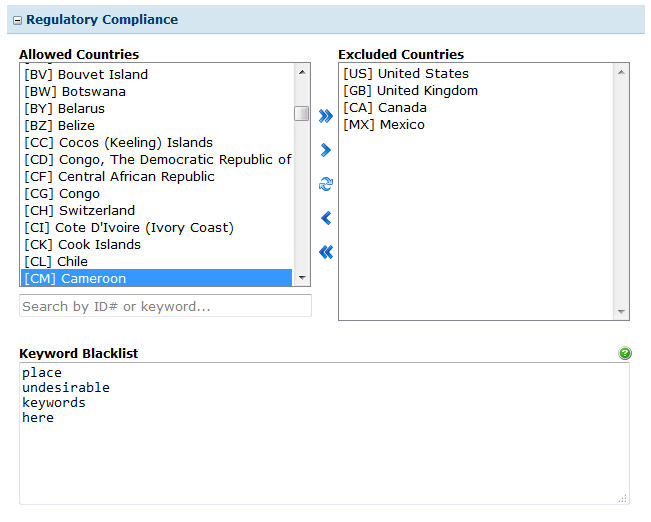Regulatory Compliance
Many advertisers in the financial and health care industries have to be mindful of ensuring their ads are compliant with regulatory laws. This can include restrictions that prohibit their ads from being shown to users in certain countries or within content about certain topics. Sometimes it can simply be a matter of brand safety as advertisers may not want their ads to appear alongside content that they may consider to be offensive or bad for their corporate image.
Is This New?
It has always been possible to apply geographic targets and keyword blocking to advertisers campaigns in order to achieve regulatory compliance. However, that process is both error-prone and time consuming. It's all too easy to forget to apply targets, mistakes can be made with data entry and since the rules must be duplicated to each of an advertisers campaigns it can be difficult to keep them in sync when changes are needed.
The Solution
To solve these problems we've added new regulatory compliance options for advertiser accounts. Those options are then automatically applied to all of an advertisers campaigns. Meaning you enter the rules once, in one place and you can be sure no campaign is left out. Dealing with regulatory changes also becomes much easier since rules only need to be edited once.
How It Works
When creating or editing an advertiser account simply scroll down the page and you will see the new Regulatory Compliance options appear as they do in the following screenshot:

Excluded Countries
For advertisers that are prohibited from showing their ads to users in certain countries simply select and move the applicable countries into the Excluded Countries box and their campaigns will be blocked from showing in those countries.
Keyword Blacklist
Implementing a keyword blacklist is even easier. Simply copy/paste your list of undesirable keywords or phrases into the box. Just make sure to only enter one keyword or phrase per line. For more help with specialized keyword syntax, click the (?) icon above the field for examples and further guidance.
Final Thoughts
Sometimes change is a good thing and we hope that this new way of addressing regulatory compliance helps you to avoid mistakes and save some time!

 Mike Cherichetti
Mike Cherichetti
